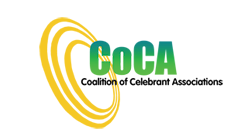However there is no training in marriage law for the 23,000 religious celebrants from the 128 Recognised religions.
Over half a century has gone by since the Marriage Act brought together the various states and terriories marriage laws in 1961.
Australia has changed greatly in that time. Also Australians have access to information via the media to other countries and their marriage laws.
These different laws and customs can confuse the general public and celebrants who have not been trained in Australian marriage law about the nature of marriage in Australia.
What can Government do to address this?
Time to consider training in Marriage Law for all Marriage Celebrants.
The Attorney-General's Department has approved three units in marriage law for the Commonwealth celebrants training course, the completion of which, is one of the appointment requirements for Subdivision C celebrants (independent civil and religious):
-
- CHCCEL005 Establish and maintain marriage celebrancy practice
- CHCCEL006 Interview clients and plan marriage ceremonies
- CHCCEL007 Prepare for, present and evaluate marriage ceremonies
These marriage law units are
- available nationally through Registered Training Organisations (RTO) and TAFE
- affordable - being units of a Certificate IV or Diploma qualification
- offered online as well as face to face.
CoCA recommends that CHCEL005 Establish and maintain marriage celebrancy practice, which focuses on marriage law be mandatory for all marriage celebrants.
Whether the definition of marriage is changed in the Marriage Act or not, there are other changes to the Marriage Act to reduce the risk of child and forced marriage.Read more about what governments can do . . .
January 2015


